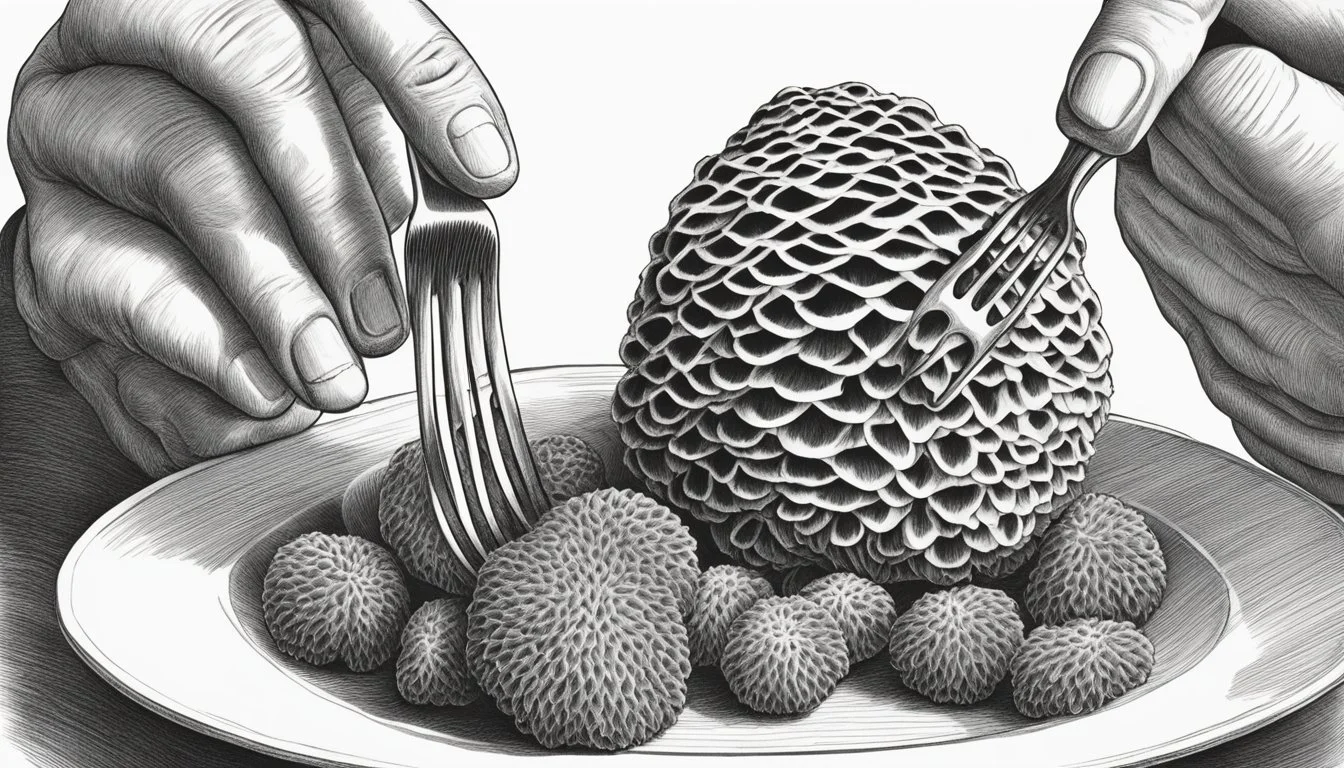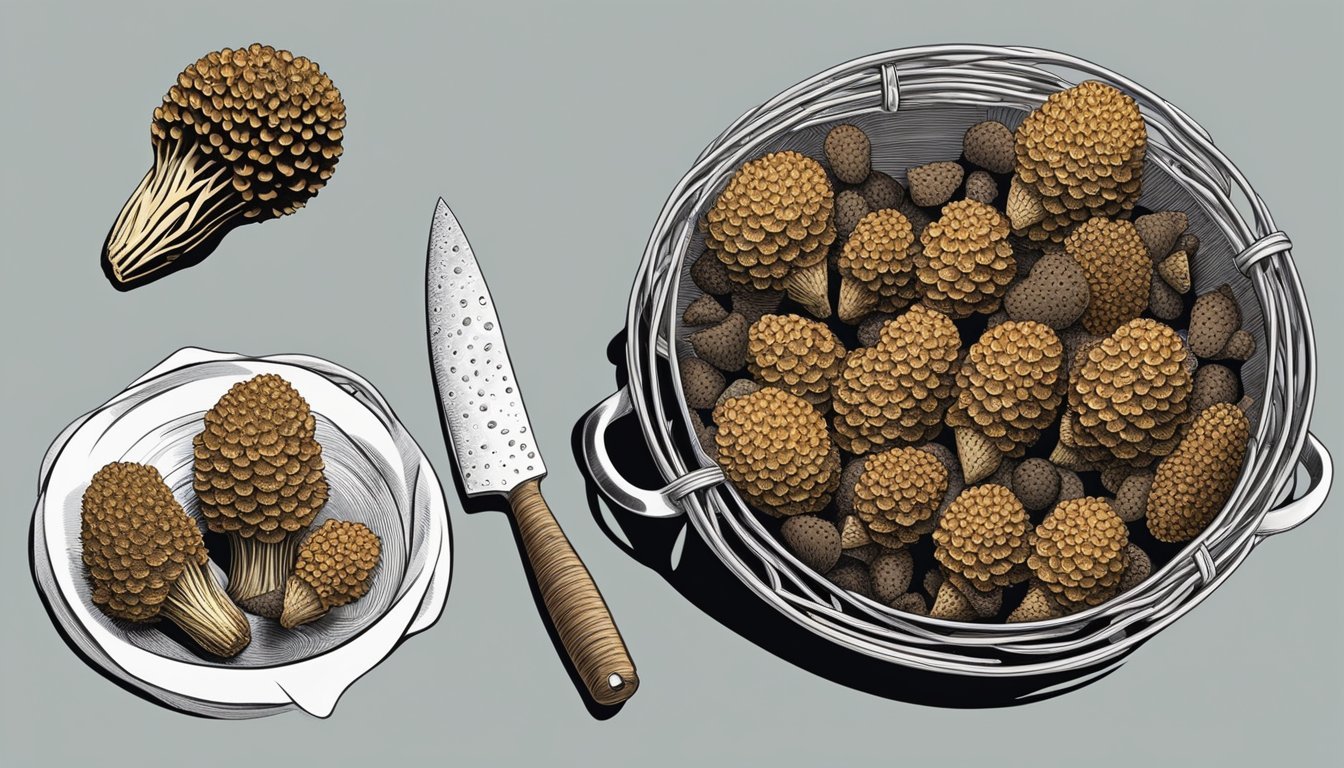How do you eat a morel mushroom?
Preparing and Enjoying this Culinary Delicacy
Morel mushrooms are a culinary delight highly sought after by both chefs and foragers due to their distinctive earthy flavor and meaty texture. These fungi are not just a favorite because of their unique taste but also for the thrilling hunt they entail, growing in the wild with a season that's eagerly anticipated each spring. Unlike the common button or portobello mushrooms found easily in supermarkets, morels require careful preparation to unlock their best qualities and ensure safety, as they should never be consumed raw. Properly cleaning and cooking morels is crucial, as their honeycomb-like exterior can harbor dirt and tiny insects.
To eat a morel mushroom, it must first be cleaned thoroughly. This involves rinsing them under cold water and possibly soaking them in salt water to dislodge any unwelcome critters and remove debris lodged in the intricate crevices. After the mushrooms are cleaned, they can be sliced in preparation for cooking. Cooking not only dispels any potential toxins but also enhances their flavor, making them a versatile ingredient that can enhance a variety of dishes.
Sautéing is a popular method for cooking morel mushrooms, bringing out their woodsy flavor while adding a desirable crispness. Morels can be coated lightly with flour or breadcrumbs, or even simply cooked in a bit of butter or oil. Regardless of the chosen preparation, morels should be cooked until they're golden brown, a stage at which their texture and flavor are at their peak. Care should be taken to not overcook as this may lead to a loss of their delicate texture and rich flavor.
Identification of Morels
Identifying morel mushrooms correctly is crucial for safe consumption, as they belong to the Morchella family and are particularly sought after in spring across North America and Europe. They grow in wooded areas and have distinct characteristics that separate true morels from false morels.
Characteristics of True Morels
True morels have a unique appearance that makes them distinguishable:
Cap Shape: They feature a honeycomb-like cap that is ridged and pitted inwards.
Cap Attachment: The cap is attached directly at the base to the stem, without any hanging free from the stem.
Stem: Morel stems are usually white to pale yellow.
Interior: Upon slicing a morel mushroom vertically, one should observe that it is entirely hollow from the base of the cap to the bottom of the stem.
True morels are found in proximity to certain trees, such as ash, elm, and apple trees, which can be a helpful indicator when foraging.
Distinguishing False Morels
False morels, while they may resemble true morels, are not safe to consume and can be toxic:
Cap Attachment: In false morels, the cap is typically not attached at the base of the stem and often dangles freely.
Interior: False morels have a cottony or solid structure inside rather than being hollow.
Cap Shape: The caps may appear wrinkled or brain-like, rather than the pitted appearance of true morels.
It is essential for foragers to exercise caution and consult with experienced mycologists or reliable guides when identifying morel mushrooms.
Foraging for Morels
Foraging for morel mushrooms can be a rewarding pursuit, intertwined with a range of environmental cues and safety concerns. Knowing when to look and where, along with proper foraging techniques, are crucial for both successful harvests and ensuring ecological responsibility.
Optimal Seasons and Environments
Morel mushrooms generally emerge in the spring, following a period of rain that helps to stimulate their growth. The prime time for foraging morels is from late March through May, but this can vary depending on geographic location and weather patterns. Morels are often found in woodland environments, particularly in proximity to dying or dead trees such as oak, elm, and ash. They favor a combination of warm soil temperatures and adequate moisture levels.
Ideal Environmental Conditions
Season: Late spring
Weather: Post-rain conditions
Temperature: Warm soil
Terrain: Woodlands near deciduous trees
Foraging Techniques
Successful foragers often search for morels by scanning the ground near eligible trees and in areas where the forest floor is moist but well-drained. It's advisable to use a mesh bag for collecting, as this allows spores from the morels to disseminate back into the environment, aiding in the propagation for future seasons. Foraging in a pattern, such as a grid or spiral from an identified potential hotspot, helps cover ground systematically.
Scan the ground near targets: Decaying trees and wooded areas.
Collect morels in mesh bags: Enhances spore dispersal.
Implement systematic search patterns: Ensures thorough area coverage.
Safety and Regulations
Identifying morels with certainty is essential, as consuming misidentified wild mushrooms can be extremely hazardous. Morels should be hollow from the bottom of the stem to the cap—a key identifying feature. It is imperative that morels are never consumed raw; they must be cooked thoroughly to avoid potential toxicity. Additionally, foragers should familiarize themselves with local foraging regulations, as certain areas might have restrictions or require permits. Moreover, they should practice ethical foraging to avoid overharvesting and habitat damage.
Safety Checklist
Identification: Verify morels are hollow from cap to stem.
Preparation: Cook morels thoroughly.
Regulations: Know and follow local foraging laws.
Ethics: Practice sustainable foraging methods.
Storing Morels
When handling morels, one must bear in mind their highly perishable nature, which necessitates proper storage techniques for both short-term and long-term use.
Short-Term Storage Methods
For those planning to consume morels within a week, refrigeration is the preferred method. Morels should be:
Stored Fresh: Place morels in a paper bag to allow them to breathe and retain their texture. Avoid airtight containers that can hasten spoilage.
Maintained Cool and Humid: Keep them in the crisper drawer of the refrigerator to maintain an optimal temperature of 32-36°F and high humidity.
Long-Term Preservation Techniques
When one needs to store morels for extended periods, they should focus on freezing or drying techniques:
Dried Morels: Spread morels out on a flat surface, away from direct sunlight, and allow them to air dry, or use a dehydrator. Once completely dry, store them in an airtight container in a cool, dark place.
Frozen Morels: Clean and slice morels before spreading them on a cookie sheet. Freeze until solid, then transfer to a ziplock bag. They can be stored frozen for up to a year.
Following these specific methods will ensure morels are preserved safely for future culinary use.
Preparation of Morels
The preparation of morels is crucial for both safety and enjoyment, involving thorough cleaning and careful trimming before they are ready for cooking.
Cleaning Morels
Morels must be cleaned meticulously to remove dirt and bugs that hide in their unique crevices. Due to their spongy, honeycomb structure, it's essential to:
Wash them thoroughly: Rinse morels briskly under cold water to dislodge debris.
Avoid soaking: Quickly wash to prevent them from absorbing too much water which can affect their texture.
Check the interior: Slice them in half to ensure the insides are free from any unwanted particles.
Trimming and Cutting
Once the morels are cleaned, they need to be prepared for cooking:
Trim the base: Cut off the tough, woody ends of the morel stems.
Cut to size: Depending on the recipe, morels can be left whole if small, or cut into halves or quarters if larger, making sure they cook evenly.
Drying the morels after cleaning ensures that they don't become soggy. A gentle pat with a paper towel removes excess water. This step is key to maintaining the morel mushrooms' highly-prized texture and flavor.
Cooking Morels
Cooking morels properly is essential to appreciate their unique flavor and ensure they are safe to consume. These mushrooms should never be eaten raw as they can cause stomach discomfort.
Basic Cooking Techniques
Before cooking, it's critical to clean morels thoroughly under cold water and dry them promptly to prevent water absorption. Morels can be sliced and then sautéed over medium heat with a mixture of oil and/or butter until they reach a golden-brown color. They should be stirred occasionally to ensure even cooking. Morels should be cooked for several minutes until they are thoroughly heated and have taken on a tender texture.
Morel Recipes and Pairings
A basic preparation of morels involves:
Cleaning: Rinse under cold water and pat dry.
Seasoning: Lightly salt and pepper.
Cooking: Sauté with butter until tender.
Morel mushrooms pair well with ingredients that complement their earthy flavor, such as:
Garlic
Shallots
White wine
Fresh herbs like thyme or parsley
Morel mushrooms could be the star in a variety of dishes, including:
Creamy morel mushroom sauce over pasta
Morel risotto
Morel omelets for a deluxe breakfast
They can also be coated with beaten egg and cracker crumbs and pan-fried for a crispy exterior.



